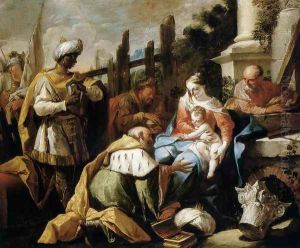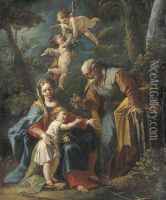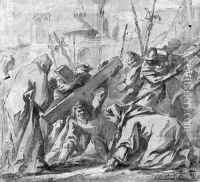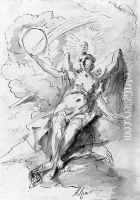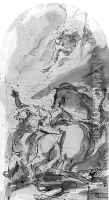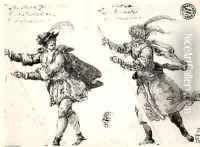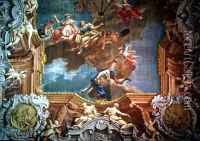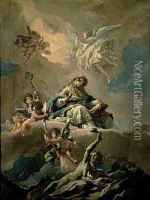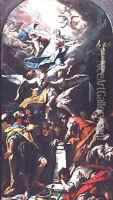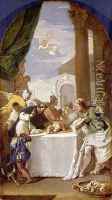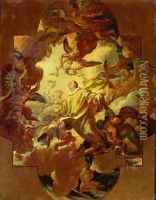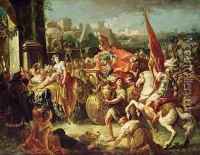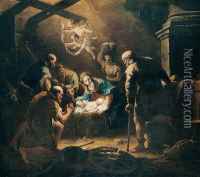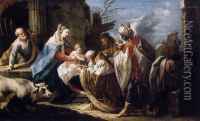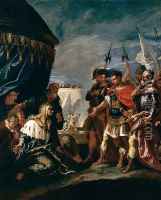Gaspare Diziani Paintings
Gaspare Diziani was an Italian painter of the Baroque period, born in 1689 in Belluno, a small town in the Venetian Republic. He was recognized for his vibrant colors and dynamic compositions in his paintings. Diziani's early training was with Antonio Lazzarini in Venice, and he quickly became influenced by the works of Paolo Veronese and the more contemporary Sebastiano Ricci.
Diziani's career flourished as he worked on various projects across Italy. He was particularly active in Venice, where he contributed to the rich artistic scene alongside other prominent artists of the time. Diziani was adept at both frescoes and oil paintings, and his skills were sought after for decorating churches and palaces. His religious works demonstrate a keen understanding of narrative, and his secular paintings often display a sense of elegance and poise.
In the 1720s, Diziani's work took him to Dresden, where he was commissioned to work for the court of Augustus II the Strong, the Elector of Saxony and King of Poland. His stay in Dresden significantly impacted his style, as he was exposed to the works of other European artists and the tastes of the Saxon court. Upon returning to Italy, he brought with him a more nuanced and international approach to his compositions.
Throughout his career, Diziani's work was marked by his ability to blend the grandeur of the Baroque with the emerging Rococo style. His scenes were often animated with lively figures and infused with a lightness that was becoming popular during the period. Diziani was also an accomplished scene painter for the theater, which further demonstrates his versatility as an artist.
Gaspare Diziani died in 1767 in Venice. His legacy is marked by his contributions to the Baroque and Rococo movements in Italy and his influence on the artists who followed. His works can still be seen in churches, galleries, and collections across Europe, showcasing the enduring appeal of his artistic vision.
